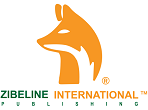EARTHQUAKE VULNERABILITY ASSESSMENT (EVAS): ANALYSIS OF ENVIRONMENTAL VULNERABILITY AND SOCIAL VULNERABILITY IN RANAU AREA, SABAH, MALAYSIA
ABSTRACT
EARTHQUAKE VULNERABILITY ASSESSMENT (EVAS): ANALYSIS OF ENVIRONMENTAL VULNERABILITY AND SOCIAL VULNERABILITY IN RANAU AREA, SABAH, MALAYSIA
Journal: Geological Behavior (GBR)
Author: Elystarina Indan, Rodeano Roslee,Felix Tongkul, Norbet Simon
This is an open access article distributed under the Creative Commons Attribution License, which permits unrestricted use, distribution, and reproduction in any medium, provided the original work is properly cited
DOI: 10.26480/gbr.01.2018.24.28
 Earthquakes are one of the most common and widely distributed natural risks to life and property. There is a need to identify the possible risk by assessing the vulnerability of the research area. The topic on Earthquake Vulnerability Assessment (EVAs) in Malaysia is very new and received little attention from geoscientists and engineers. Taking the 5.0 Ranau Earthquake 2015 as research study, the research’s main objective was to identify the social vulnerability and environment vulnerability on that area. The framework was formulated semi quantitively through the development of database for risk elements (properties) based on the information from secondary data, literature review and fieldwork. The vulnerability parameter includes social status (injury, fatalities, safety, loss of accommodation and public awareness) and interference of environment (affected period, daily operation and diversity). Each considered parameter in the vulnerability parameter is allocated with certain index value ranges from 0 (0% damage/victims/period),0.25 (1-25% damage/victim/period), 0.50 (26-50% damage/victims/periods), 0.75 (damage/victims/period), and 1.0 (75-100% damage/victim/periods). The value obtained from field work are calculated by using formula and are classified into five classes of vulnerability namely class 1 (<0.20): Very Low Vulnerability: Class 2 (0.21-0.40): Low Vulnerability; Class 3 (0.41-0.60); Medium Vulnerability; Class 4 (0.61-0.80): High Vulnerability; and Class 5 (>0.81): Very High Vulnerability only. Results from this study indicate that a further study is needed to the area of high to very high vulnerability only. This approach is suitable as a guideline for preliminary development in the research area and potentially to be extended with different background and environments.
Earthquakes are one of the most common and widely distributed natural risks to life and property. There is a need to identify the possible risk by assessing the vulnerability of the research area. The topic on Earthquake Vulnerability Assessment (EVAs) in Malaysia is very new and received little attention from geoscientists and engineers. Taking the 5.0 Ranau Earthquake 2015 as research study, the research’s main objective was to identify the social vulnerability and environment vulnerability on that area. The framework was formulated semi quantitively through the development of database for risk elements (properties) based on the information from secondary data, literature review and fieldwork. The vulnerability parameter includes social status (injury, fatalities, safety, loss of accommodation and public awareness) and interference of environment (affected period, daily operation and diversity). Each considered parameter in the vulnerability parameter is allocated with certain index value ranges from 0 (0% damage/victims/period),0.25 (1-25% damage/victim/period), 0.50 (26-50% damage/victims/periods), 0.75 (damage/victims/period), and 1.0 (75-100% damage/victim/periods). The value obtained from field work are calculated by using formula and are classified into five classes of vulnerability namely class 1 (<0.20): Very Low Vulnerability: Class 2 (0.21-0.40): Low Vulnerability; Class 3 (0.41-0.60); Medium Vulnerability; Class 4 (0.61-0.80): High Vulnerability; and Class 5 (>0.81): Very High Vulnerability only. Results from this study indicate that a further study is needed to the area of high to very high vulnerability only. This approach is suitable as a guideline for preliminary development in the research area and potentially to be extended with different background and environments.| Pages | 24-28 |
| Year | 2018 |
| Issue | 1 |
| Volume | 2 |
[button size=”extralargebold” subtitle=”Download” style=”orange” align=”” dp_animation=”bounceInUp” linktarget=”_blank” icon=”Default-file-pdf-o” link=”https://zibelinepub.com/?ddownload=7886″]PDF File[/button]
[button size=”extralargebold” subtitle=”Download” style=”green” align=”” dp_animation=”bounceInUp” linktarget=”_blank” icon=”Default-file-code-o” link=”https://zibelinepub.com/xml/1gbr2018/1gbr2018-24-28.xml”]XMLFile[/button]
Recent Posts

